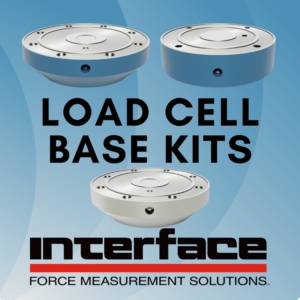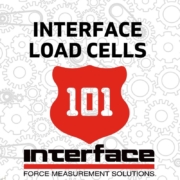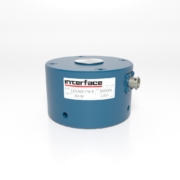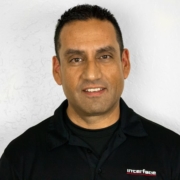Basics on Load Cell Base Kits
 As resilient and accurate as load cells are engineered, there is risk of damaging a load cell if they are not properly supported through mounting or mating to the test subject or test bench.
As resilient and accurate as load cells are engineered, there is risk of damaging a load cell if they are not properly supported through mounting or mating to the test subject or test bench.
Load cell bases are designed to support and stabilize load cells. Load cell bases come in assorted sizes and configurations, depending on the intended application and the weight capacity.
Load cell bases are used with load cells that are frequently utilized in industrial equipment, test machines, and commercial testing labs. They may also be integrated into several types of equipment, such as weighbridges, conveyor systems, structural test stands, and packaging machines.
Interface publishes numerous guides on properly supporting a load cell during a test. However, for our LowProfile™ load cells, we provide complete Load Cell Base Kits to provide the engineered accuracy and necessary support for precision performance as intended in regular use. Bases minimize risks in damaging load cells from improper use.
Load cells with positive overload protection must be ordered with an Interface installed base. The positive overload option is useful when high overloads occur in applications such as: impact loads on weighing platforms; engine malfunctions during rocket or jet engine testing; transient overloads on engine dynamometers.
Interface’s Load Cell Base Kits are a type of mounting plate guaranteed to provide optimum support for the flexure. Using the base, or a support surface with its equivalent flatness and stability, is required to ensure the exceptional performance. They are heat treated and high strength bases, available in all standard sizes of our low profile models.
Standard thread size is the same as the mating load cell. Bases or flat mounting surfaces are required for all low profile load cell installations. A mounting surface that is flat to 0.0002″ T.I.R. (total indicator reading) is required, unless a base is installed.
Use of the base, or a support surface with its equivalent flatness and stability, is required to ensure the exceptional performance of the LowProfile® Series.
The threaded hole in the base is on center, and a plug is permanently installed to seal dirt and moisture out of the space between the bottom hub of the flexure and the flat surface of the base. Center hub deflects under the load until it contacts the base which provides positive overload protection. The center tapped hole is sealed to keep overload surfaces clean.
When the base and load cell are ordered together, the base and plug are factory installed using the proper hardware tightened to the required torque specs. A plug is supplied in between the cell and the base to prevent damage or errors caused by over engagement of mating parts.
There are 14 model options in standard Load Cell Base Kits in both U.S. and Metric Threads. They are available for our standard 1000, 1100 and 1200 Load Cell Series of various capacities. We offer 15 stainless steel model options to be paired with our 2400 and 3200 Load Cell Series.
Load Cell Base Kits are an excellent accessory to ensuring the most out of your LowProfile Load Cells provide the performance as designed. For complete instructions on installations, please reference our Support section on the website.
ADDITIONAL RESOURCES
Load Cell Basics Sensor Specifications
Interface Presents Load Cell Basics








